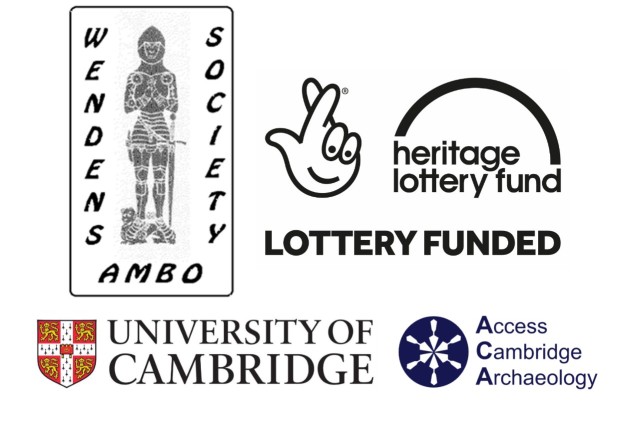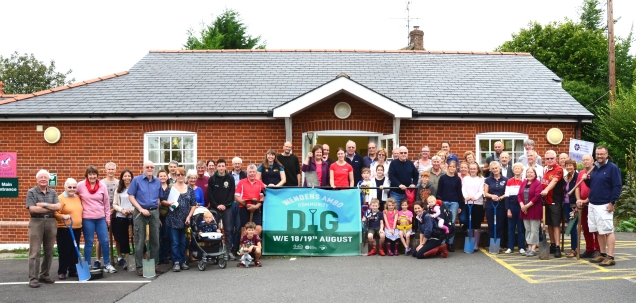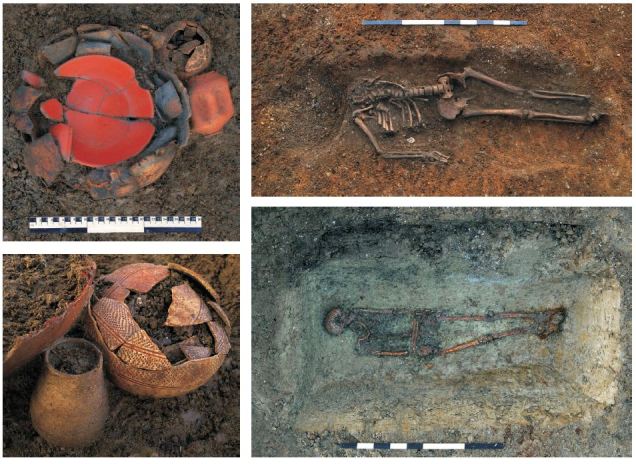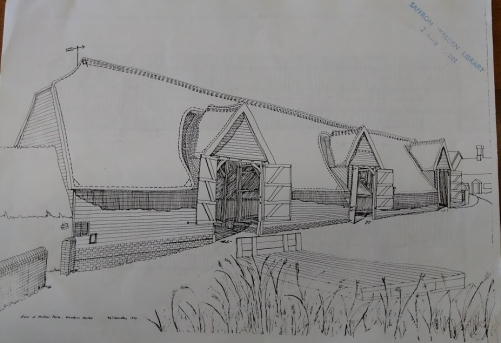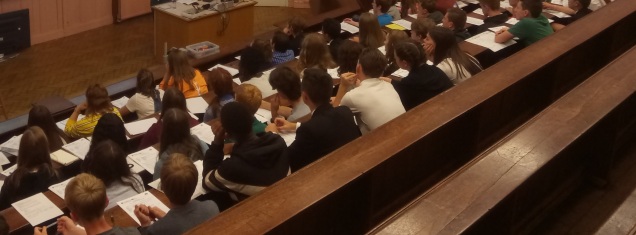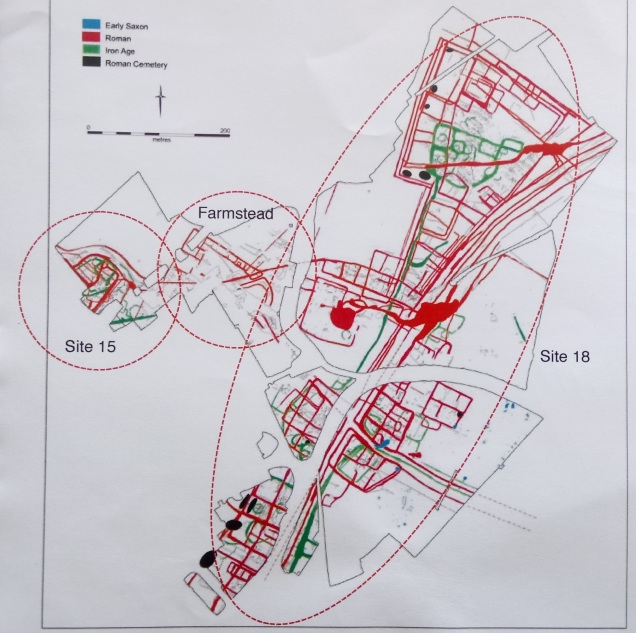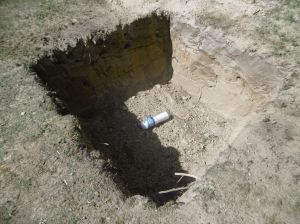Our one ILAFS for 2019 and ACA’s last field school was ran over the 1st-3rd of May 2019 in the small village of Blythburgh close to the Suffolk coast. It was our 3rd year of digging test pits in the village, none of which could have been undertaken without the support and generosity of the Blythburgh Local History Society and in particular, Sonia, Alan, Meryl, Chiara and Jenny and of course the homeowners in Blythburgh who kindly let the students excavate in their gardens!
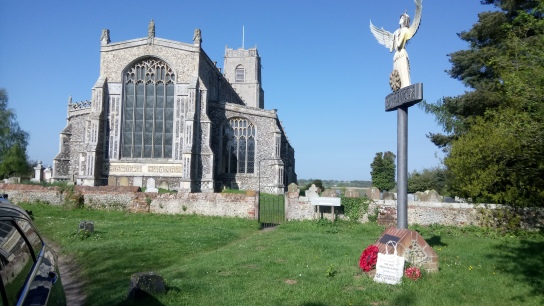
After a last-minute drop out from one school, due to a conflict, we were joined by 42 Year 8 and Year 9 pupils from Sir John Leman High School, Benjamin Britten Academy, Ormiston Denes Academy and Bungay High School, all local to East Suffolk and Blythburgh. The students were met by ACA in the Holy Trinity Church, which was our base for the two days in the village and were first given an introductory talk by ACA’s director, Alison Dickens about what to expect on the 3 days of the ILAFS programme, the process and recording of test pit excavation and the all important health and safety. After a quick break, we divided all the students into groups of three or four, with a mix of pupils from each school, as one of the aims of ILAFS is to get the students to work with people they may not know, as well as doing something that they may have never undertaken before. 
As ever, another Blythburgh regular, Rafael the cat, was also on hand to help the team, starting by inspecting the equipment! We were very lucky to have former ACA employee Emily Ryley volunteering with us again, with the Schools Liaison Officer (SLO) from St Catharine’s College, Cambridge, Kathryn Singleton and ACA regular John Newman, a freelance archaeologist local to Suffolk and our pottery expert.

A total of 11 test pits were excavated in Blythburgh in 2019 and sited across the village, which with the previous excavations, brings the total number of pits dug there to 36. All the previous results and this years, can be seen on the ACA website here. Blythburgh is a very interesting settlement with a long history, the name means ‘stronghold on the River Blyth‘, taken from the name of the river Blyth that meant ‘the gentle or pleasant one‘ and the Old English word for burh to mean a defended or fortified settlement. The village was recorded in the Domesday Book as Blideburgh and had its origins during the Middle Anglo Saxon period as an important religious centre and one of the richest churches in the county. A Priory was also founded here during the 12th century for the Augustinian Canons.

With the excavations underway in the sunshine, a number of different finds were revealed through the 2 days of excavation. TP1 at the Knoll, just outside the churchyard, revealed a track or road way running parallel to the church, but was identified at a relatively shallow depth, so was not too old in date. The oldest pottery recorded, dated from the Middle Anglo-Saxon (AD 700-850) from two test pits, 3 and 9, adding to the previously recorded Middle Saxon pottery found through the test pitting strategy and likely represents activity associated with the priory founded here at that time.
Test pit 2, along Church Lane, found a clay pipe bowl, which in itself is not unusual, but this particular clay smoking pipe had an image of Tom Sayers, a bare-knuckle fighter, born in Brighton in 1826 and took part in one of the ‘fights of the century’ against American John Heenan, which after a staggering 37 rounds, the fight was declared a draw! One sherd of pottery also from TP 2, also dating to the 19th century, has a partial inscription which is legible a ‘FIGH’ which can be finished as fight or fighter so it’s highly likely that a mid-19th century boxing enthusiast lived here!
We are beginning to see a pattern in the distribution of the high medieval (AD 1066-1399) pottery from Blythburgh, with a large amount being recovered each side of the road close to the river and the rest of the focus of settlement to the south of the 12th century priory. The face sherd from a German stoneware bellarmine jug of 16th-17th century date and a shield decoration from a similar stoneware jug were both recorded from TP 11, perhaps an indication of trade links to the continent, or a local resident with mercantile connections.
All the pupils worked very hard over the two days of excavation, nearly managing to dodge all the showers as well and were looking forward to travelling to Cambridge for the day 3 of the ILAFS programme.
On the 3rd day, all the students and staff travel to the University of Cambridge to get a sense about University and learn more about higher education in general. The first session of the day is delivered as a university style lecture, so a very new way of learning to these Year 8 and 9’s! Emma Brownlee, PhD student at Cambridge, delivered the morning lecture encouraging the pupils to think about what they have found over the last couple of days and how they relate to the bigger picture of the development of Blythburgh.
An objective for after the ILAFS, is for each participant to complete a write up of their own excavation results. Emma Brownlee also guided the students on how to produce a good written report, a valuable skill as coursework is no longer included in GCSE’s and will give these pupils an opportunity to try out their writing skills and have detailed feedback and an overall grade returned to them.
The students also got to experience their potential futures, with a tour and lunch at one Cambridge College, and experiencing what life as a student is like. The visit to a college for lunch and a tour make a big impression on the students and the visit to St Catharine’s and Peterhouse were no exception. Seeing how students live and work whilst at university is often better than just being told about what its like and can make the ILAFS pupils think about their futures at a much younger age. This was picked up on when they had a talk from St Catharine’s School Liason Officer (SLO), Kathryn Singleton, who had also accompanied the pupils for the two days before hand in the field. Kathryn took the group through some of the different routes and pathways you can take at university and beyond and also what the pupils can do now for themselves. Being informed about university, even before their GCSE’s is important, as this will aid in their decision making process about their futures.
The students also got to understand and study other finds and how they relate to the bigger picture of the settlement as a whole, with a visit to the Museum of Archaeology and Anthropology, led by Jenny Williams. The students produced some great posters detailing what the artefacts from a particular place can tell us about different aspects of the society they are from, the aim being to link this practical activity as another aid in the pupil’s own report writing.
The residents of Blythburgh were all impressed with how the pupils behaved and took to this new challenge and everyone appreciated the delivery of cake to every test pit site, by the Blythburgh History Society! Archaeology is not a career for everyone, but the range of skills learnt on the ILAFS programme, will certainly help inform the youngsters who took part about all their post-16 education options and that each and every one of them, if they want to and work for it, can get into the University of Cambridge!

Thank you again to everyone involved for making this another brilliant excavation and ILAFS. Perhaps we can come back again next year…..


























